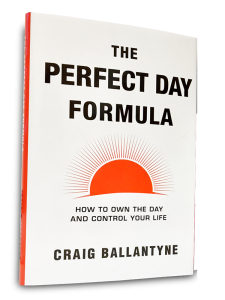This Woman Almost Lost Her Life to Depression. CBT Saved Her.

Sarah is a 39-year-old success story.
Or, at least, she would appear to be from the outside: She’s got a respectable career in business, has always received high marks for ingenuity and drive, and is in peak physical health.
Inside, however, is a different story. “I’ve been bullied, both physically and emotionally, and those experiences have undoubtedly left their own scars,” she confesses. “But by far the cruelest bully is the one inside my own head. My self-esteem [has always been] rock bottom.”
Here’s how this devastatingly poor self-image ultimately played out:
One cold winter January evening, I was wandering alone along Brighton seafront, crying, feeling numb, dead inside, and useless. The last few months had been tough. I’d had a panic attack at work which had deeply unnerved me and added to my growing sense of unease, fearing another. I’d been through worse things in my life though, and just tried to cope.
I battled on a few weeks longer but couldn’t think straight. I became forgetful and confused, I couldn’t sleep, had a constant sense of imminent panic, and felt out of control and upset. I left keys in the front door, forgot my pin number, was exhausted mentally and physically… and had a breakdown. At one point, I forgot how to drive and where I lived. Loud noises freaked me out, atmospheres or just being around people affected me intensely, every conversation with colleagues or friends set off intense uncontrollable paranoia.
Sarah’s story might seem an extreme example, but the self-doubt she suffers is a pervasive reality. Many of us struggle with low self-confidence, stress, anxiety, and depression. As a result, we build habits that reflect this struggle: We react defensively when offered constructive criticism; we double-back on decisions that don’t meet with resounding support; and we shy away from voicing our opinion lest we be judged for stupidity.
We’ve all been there. Fortunately, however, there’s a way to combat the thoughts that plague us—the “bullies in our own heads.” It’s called Cognitive Behavioral Therapy, or CBT.
You may have some knowledge of CBT, but in case you don’t, here it is summed up in a relatively simple premise: The way that individuals perceive a situation is more closely connected to their reaction than the situation itself. Our perceptions come charged with a host of automatic biases and judgments, which then interpret situations in such a way as to evoke strong (often negative) emotions and behaviors.
For Sarah—as for many of us—the key to changing our emotions and actions starts with taking a hard look at our perceptions. In other words, we need to unpack how we interpret the world.
Here’s an example of what this self-analysis might look like:
As a child, let’s assume you faced a lot of unduly harsh criticism and judgement from your teachers and family. As a result, you learned that you were incapable of succeeding at most tasks—especially big ones. As you grew older, your behaviors changed to accommodate this thinking. You avoided most challenges (unless absolutely necessary). Now, you find yourself in a job that’s not challenging at all; in fact, it’s quite easy, and therefore, safe. You aren’t pushed don’t do anything you aren’t 110% sure you can do, and you aren’t expected to climb any ladders.
Until, one day, your avoidance comes to a head. You get a surprisingly good opportunity for a new job that offers more money, better benefits, and will open countless career doors for you. Your response is to rationally consider the pros and cons of the situation. Instead, you immediately begin thinking about why it’s a bad prospect—all in an effort to support the decision you want to make to turn down the offer. No challenges, right?
Part of you, however, knows that you could do better. And your friends certainly know you can. Will you stagnate in your current job, just to feel safe?
Did Sarah let her anxiety and depression tear her apart? No. She started CBT therapy so she could take her life back.
If any of this hits home, then I recommend taking a close look at these CBT strategies/questions for a deep dive into your perceptions and thoughts so you can finally expel your “mind bullies” and move ahead in life:
1. The first step to CBT progress is being consciously aware of your thoughts and perceptions. So, start a small thought journal you can carry with you. When you have a strong emotional reaction to a situation, see if you can unpack it. Here are some questions you can ask yourself to get to the heart of your automatic thoughts:
- Are you filtering? In other words, are you pushing out all the positive and focusing just on the negative? Have you previously endured a lot of negative experiences and feel the need to always be ready for them?
- Are you compelled to see things only as black or white? What is keeping you from acknowledging shades of grey? When you try to acknowledge shades of truth or reality, what emotions arise?
- Are you overgeneralizing or jumping to conclusions? Is there a pattern in the kinds of conclusions you’re drawing?
- Do you see every comment or action as an implicit statement about you? Is there a past judgment or pattern of judgments that might induce this behavior?
- Are you quick to blame others, even when blame isn’t of concern? Do you have a personal history of often being blamed by others?
- Are you plagued by unreasonable high standards or a need to always be right? Were you ever humiliated for being wrong?
2. As you continue your thought journal, consider finding a support group to address some of these questions. You can also share them with a family member. Again, your own perception might be clouding your conclusions, so it’s helpful to have others honestly share their impressions—in a way that is gentle and constructive. The goal, ultimately, is to show yourself an objective reality that isn’t muddied by your automatic thoughts.
3. Be mindful of how your emotions and behaviors change as you begin to understand the origins of your perceptions. Consciously acknowledging this connection will reinforce the value of changing your automatic thoughts so that you can change emotion and behavior.
The good news is, CBT isn’t a treatment limited to specific mental conditions. It’s been used as a successful modality for anxiety, depression, anger, stress, PTSD, and countless other mental inhibitors.
And it works. The National Institutes of Health affirmed this in a 2012 study, highlighting the ailments above as the areas most effectively treated by CBT.
Here’s the honest truth: Anything that’s holding you back mentally, is holding your whole life back—your job, your relationships, your goals, your dreams. If you had a chance to pursue all of these with freedom, uninhibited, why wouldn’t you?
Try a CBT thought journal and question exercise for a week. See what it can do to your emotional state and your habits. You may just be surprised at the changes you see.
 When you’re ready to tackle those dreams and goals—and need the right routines to keep your energy and productivity high—then you’ll need “The Perfect Day Formula.” Used by thousands to help them find clarity and purpose, this book is available for FREE—and might just be the key to FINALLY achieving those goals you’ve been putting off. What have you got to lose? Get your FREE copy now.
When you’re ready to tackle those dreams and goals—and need the right routines to keep your energy and productivity high—then you’ll need “The Perfect Day Formula.” Used by thousands to help them find clarity and purpose, this book is available for FREE—and might just be the key to FINALLY achieving those goals you’ve been putting off. What have you got to lose? Get your FREE copy now.
